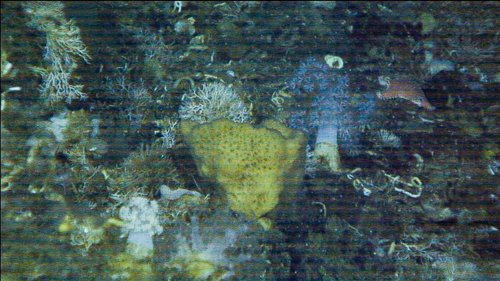
Contact
Anne Helene Tandberg
cruise leader
Beate Hoddevik Sunnset
communication advisor
+47 908 21 630

Published: 05.09.2014 Updated: 24.10.2019
The Finnmark coast was, as we expected, quite variable – both regarding geology and biology. We had stations from near the shore (the shallowest station was in around 50 m water depth) out to around 50 km from the coast. Along Finnmark, we have covered 7500 km2 during the two cruises in 2014 – in April and now in August.

A typical station with exposed bedrock in Finnmark. Soft corals, sponges and bryozoans share the space.
Our stations in the southeastern Barents Sea, in the Thor Iversenbanken area, exhibited less variation in bottom type. Although we see many exiting landforms on the seabed, the uppermost seabed sediments mainly comprise sandy mud and muddy sand. The biology is dominated by polychaeta that live in the soft sediments. The originally planned mapping area was 6000 km2, with depths from 250 m to 350 m. In addition to this, we have started work in next year's mapping area.

The soft seabed sediments in the Barents Sea have given large beam-trawl samples. Our largest sample was around 1600 liters of mud - weighting around 2 tonnes. This results in a nice workout for the biologists on shift having to shovel everything up into buckets before we can start sieving out the animals (photo Anne Helene Tandberg).
As we head home with data and samples, we look forward to exciting winter-months before heading out on new adventures next year.